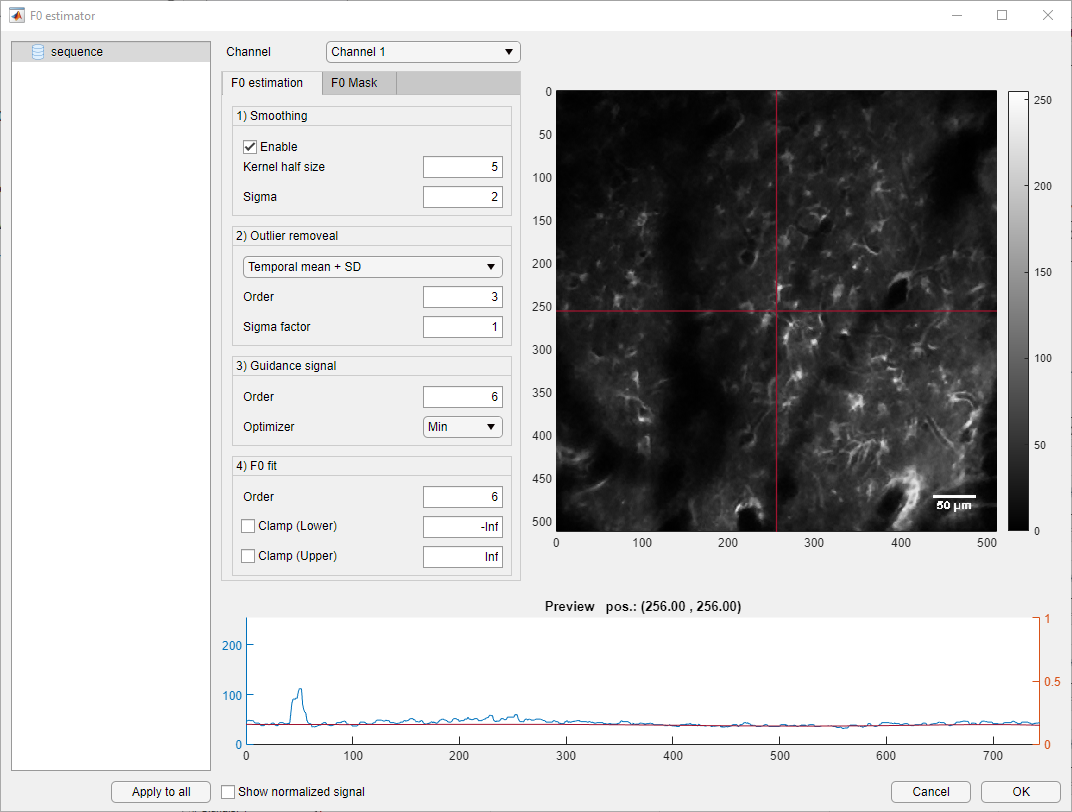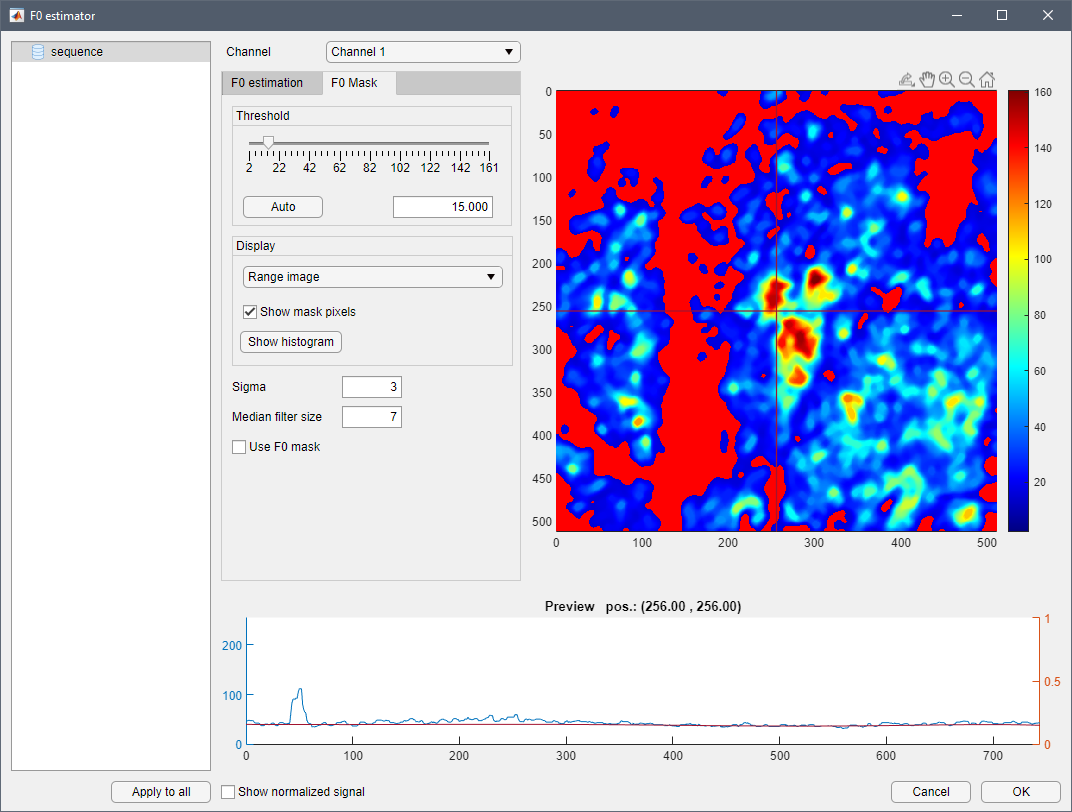F0 masking is a powerful tool to effectively explude pixels from further analysis. For example, a field of view may contain areas with little (e.g. just noise) or no fluorescent activity at all. Silencing these pixels has an beneficial impact on performance, since fewer computations need to be done. But, besids accelerating computations, F0 masking can also have a positive effect by reducing the chance of false positive detection. Consider, for example, an almost black pixel with no fluorescest activity, where only some (detector) noise is present. This pixel typically has values close to 0, which results in F0 being also close to 0 or 0 in some places. This will very likely cause very high peaks or even values going to ∞ during the ΔF/F0 calculation, which will in turn cause the ROI-detector to create false-positives, or artificially enlarge real ROIs.
F0 masking is based on the fluorescent range map of the dataset. This allows to effectively identify pixels with no or only weak fluorescent activity within the dataset. Pixels excluded by F0 masking will not undergo the baseline estimation, but be assigned the exact values from the (pre-processed) dataset, F. This wffectively sets them to 0 during the ΔF/F0 computation and thus renders these pixels "invisible" for the ROI detector.
 F0 estimation
F0 estimation
